How Many Art Shows Has Pierre Auguste Renior Been in
Impressionism, the partakers of the expositions:
Sketches of
Auguste Renoir (1841 -1919)
Auguste Renoir, an impressionist portraitist:
Renoir is one of the most famous Impressionists. But impressionism is by and large associated with landscapes painted 'en-plein-air' and Renoir did so several times. Merely most of all was he a portraitist. In several paintings the model dissolves with the groundwork and is caught in a random moment, run across for case Madame Chocquet reading (here below). In well-nigh portraits of Renoir the model comes out distinctly from the background. In his early portraits he however uses the traditional tones of blackness, brownish and grey. In his later portraits the backgrounds are more than colourful. In these portraits Renoir uses small, vivid brushstrokes which give the portrait a vibrant glow. And look at the palet of colours he uses for the hair of the models; what a master ! A good case is the portrait of Jeanne Samary which he exhibited at the 3rd 'impressionist' exposition in 1877.
Auguste Renoir joined in (only) 4 of the 8 impressionist expositions:
In the beginning Renoir was an agile member of the impressionist art movement. 1873/12/27 Renoir is co-founder of the 'Société Anonyme des Artistes…' and he volition exhibit at the first 3 'impressionist' expositions and partly be active in the system.
1874/4/15 Renoir exhibits 7 works and perhaps 1hc (=hors catalogue = outside the catalogue) at the commencement impressionist exposition, including 4 portraits (see pictures 1874).
Apr 1876 Renoir exhibits xviii+1hc=nineteen works at the second impressionist exposition, all portraits (see pictures 1876).
April 1877 Renoir exhibits 21 works at the third impressionist exposition, including 12 portraits (encounter pictures 1877).
But 1878 onwards Renoir chooses to go out the impressionist expositions behind and to admit to the Paris Salon again. In 1882 Renoir doesn't want to join the 7th 'impressionist' exposition, but he tin can't forestall Durand-Ruel from exhibiting 25+4hc=29 of his works (including xiii landscapes and five notwithstanding lives; come across pictures 1882). In March 1881 he writes to Durand-Ruel: "There are in Paris scarcely xv art-lovers capable of liking a painting without Salon blessing. In that location are lxxx.000 who volition not buy an inch of canvas if it is not in the Salon… My submitting to the Salon is entirely a business organisation matter." (R2,p308).
Meet for an account of the exhibited paintings (references, translations, info, word, locations on Google-maps).
Auguste Renoir had an clashing relationship with the Paris Salon
Renoir at first followed a more traditional path equally a painter. He copies old masters in the Louvre (1860-64), attends the studio of Gleyre (1861/eleven/viii till 1864/Summer) and admits the Ecole des Beaux-Arts (1862/4/1) and takes function in several exams and contests. In 1864 he debuts at the Paris Salon, after he was first rejected in 1863. In his admissions he uses mythological themes (1863 + 1867) and a lot of blacks, browns and greys. In the oriental themes the influence of Delacroix is apparent (1870 +72). He is oft rejected (1863, 66, 67, 72,73). With the paintings that were accustomed (in 1864, 65, 68, 69, seventy) he didn't have much succes. After joining the 'impressionist' expositions in 1874, 76 and 77 he admitted again to the Salon in 1878. (Some sources say he already did so in 1875 + 1877.) He would be accepted the next v years and again for the concluding time in 1890. (Annotation: since 1880 the Salon was organised by the Société des Artistes Français = SdAF.)
In 1877 Renoir criticises the Ecole des Beaux Arts which is 'fully based on the by' and 'sends painters to Rome to copy Raphael'; he pleads for 'modern movements', 'a new cultural consciousness' and 'originality' (R30,p136). But autumn 1881 Renoir will go to Italy and copy onetime masters, including Raphael. See the pictures Renoir submitted to the Paris Salon ; and an account (references, translations, info, discussion, locations on Google-maps) of this.
1883, Auguste Renoir distances from Impressionism:
Autumn 1882 Renoir writes: 'Don't talk me anymore well-nigh portraits in sunlight. A nice dark groundwork, that's the right thing.' (R31,no.66). In another letter of the alphabet he writes that around 1883 he concluded that Impressionism was a expressionless-end road (R32,p55). Inspired by Ingres he would lay more emphasize on line and composition. Instead of capturing the momentary lite furnishings en-plein-air he tries to render timelessness in the studio (R31,p242). The portraits go monumentally, his brushstroke more than smooth and the faces and bodies more porcelain-similar, come across for example the portrait of Lucie Berard (R30,no.599). He tried to capture 'the smallest details' (R193,p25)
Merely when we expect closely, he didn't paint much pictures in this way. Far more pictures in this period are painted with clearly visibel paralellel brushstrokes, which was too influenced past Cézanne, as in the pic at Roche Guyon (R31,no.77). And he nonetheless paints his wife blending with the background of the garden and with a bright brushstroke in 1884, as he did in a similar style in other pictures.
And shortly before, at the kickoff of his Italian trip, he painted his almost impressionistic city-view in Venice (see below 7IE-1882-147).
In later years he still paints the leaves-filtered-sunlight, like in the apple tree seller (ca.1890). And his landscapes stay very colourful, like the footbridge at Essoyes (ca.1898-1901). In that sense Renoir stayed an impressionist painter. In a belatedly painting, the Chapel in Cagnes (1905), he returned to his Ingres-period and once more used thinned paint and laid emphasize on line.
How must we interpret Renoir'southward distancing from Impressionism? We know his art-collectors and near important the art-dealer Durand-Ruel (see below) disliked his new linear style (R31,p242). In strange exhibitions he would all the same be represented equally an impressionist painter (R30,p315). He even so would dwell among impressionist circles (meet below) and as we saw, he continued painting with bright vibrant colours.
Auguste Renoir at other exhibitions:
At the Salon d'Automne Renoir was called 'Président Honneur' and 'sociétaire' (1905-07); in 1904 there was a retrospective of his works and in 1905+06 he partakes and was part of the commitee (R239). (Notation: more than about Renoir exhibiting at other exhitibions will follow in the future.)
Characteristics of Auguste Renoir as a painter:
Renoir is above all a portraitist (see also above). His most impressionist portraits are anonymous. Especially in commissioned portraits the pose often is more than formal, being painted for 'eternity'. The background is often darker, so the model comes out distinctly. For the black cloths Renoir ofttimes used nighttime purples, reds, blues and greens. In his early years his portraits are more traditional. In those pictures Renoir uses a lot of blacks, browns and greys and the brushstroke (in the face) is more than shine. The majority of Renoir's portraits are women. More than once he paints them with a dreamy gaze and makes them more beautiful and elegant than they really were (R15, p204).
Although he already paints en-plein-air in the forest of Fountainebleau, Renoir still uses a lot of night greens and browns and his brush stroke is quite smooth. In 1869 with Monet in Grenouillère Renoir starts to loosen his brushstroke and to brighten his colours.
In the highlights of his impressionistic paintings the leaves-filtered-sunlight is very typical (see above 3IE-1877-186; and also 2IE-1876-212 and 3IE-1877-185). In those pictures Renoir tries to render the momentary influence of the sunlight on the colours of the objects; typical impressionistic. But in the landscapes he makes, at that place is non often an indication of fourth dimension-of-day, season or weather condition-atmospheric condition. By and large his indications of place are more approximate. In this sense Renoir is non a typical impressionist landscapist (see also account).
In the 1870's Renoir ofttimes paints the leasures of comtemporary urban live: groups of young vivid shiny people in restaurants, loges, dancing-places, boating, etc. In that sense he is a painter of 'la-joy-de-vivre' (come across in a higher place 3IE-1877-182; 7IE-1882-140; but also 1IE-1874-142; 7IE-1882-151). Renoir scarcely paints workers and if he does it's more idyllic.
Renoir sometimes painted (colourful) still lives (encounter 7IE-1882-144, 145, 156, 158, 159). 1880 onwards nudes become an important theme is his paintings. By the mid-1890s Renoir starts using many reds and once more blacks in his pictures (R30,p8; R31,p250), come across painting Vollard below.
Renoir never was a painter with big theories. He said: 'the purpose of a painting is to decorate a wall' (R30,p8). Still in 1884 he attempted to establish the 'Société des Irrégularistes'. In the pamphlet he writes, that all art-work has to based on the principal of irregularity, considering in nature nothing is the same. 'The eyes in a beautiful face are never alike.' (R30,p137;R193,p26)
Durand-Ruel gave Auguste Renoir prosperity and fame:
Renoir came from a working class family unit. His begetter was a tailor and his female parent a dressmaker. He himself started at the age of thirteen to piece of work as a decorative painter and continued to do so in the 1860s. In 1864 Renoir was first accepted at the Paris Salon, this increased his expectations to make a living as a painter (R31,p19). Outside the Salon there were not many exhibition possibilities. In the 1860'southward his chief source of income were commissions for portraits (R30). Still Renoir often was short of money and was hardly able to purchase nutrient or painting materials.
In 1872 the fine art-dealer Durand-Ruel started to purchase some pictures of Renoir and 1873 onwards some art-collectors started to purchase his work and give him commissions. The 'impressionist' expositions he joined weren't a fiscal succes, neither were the auctions in Hôtel Drouot (1875 + 1877). In March 1881 in a letter of the alphabet to Durand-Ruel Renoir sighs 'There are in Paris scarcely fifteen art-lovers capable of liking a painting without Salon blessing. At that place are 80.000 who will not buy an inch of canvass if it is not in the Salon… My submitting to the Salon (since 1878 again) is entirely a business matter.' (R2,p308)
In 1879 Renoir has success at the Paris Salon (Mme. Charpentier and her children, come across below) and he besides exhibited at La Vie Moderne. 1881 was a turning point when Durand-Ruel started to buy many of Renoir'due south work. In 1882 alone he spend almost 30.000 francs (R31,p28). 1883 onwards the possibilities for exhibiting his works are increasing. Most of import past Durand-Ruel (1883+), merely as well Georges Petit (1886+), Les Twenty in Brussels (1886+). In 1886 an important foreign exhibition was held in New York organised (by Durand-Ruel). Many foreign exhibitions would follow. Conclusion: Renoir didn't need the 'impressionist' expositions and fifty-fifty the Paris Salon anymore.
In 1892 the state bought 'Jeunes filles au pianoforte' (see beneath) for 4000 francs, which denoted an official recognition (R31,no.91). In 1894 six of his works from the Caillebotte bequest are accepted in Musée Luxembourg (at present in Musée d'Orsay) (R31,p23). In 1900 Renoir receives the order of 'Chevalier de la Légion d'Honneur', in 1911 he becomes 'Officier' and in 1919 'Commandeur'. This financial prosperity is translated in his frequent travels (1881-1898) and in buying a house in Essoyes in 1895 and the manor 'Les Colettes' in Cagnes in 1907 (R31). Even so he never cared for luxury and was known every bit a modest man (R30).
Auguste Renoir always was active within the impressionist circles:
Renoir regularly met other impressionists in Café Guerbois, Eating place Fournaise, Café Nouvelles-Athènes, Café Riche, the soirees at the Charpentiers and Morisot's house (run into meeting together in Paris). Renoir regularly spent time and painted together with other impressionists: at Gleyre, in Fontainebleau, at Grénouillère, Argenteuil with Monet, Sisley, Cordey, Cézanne, Caillebotte, Morisot, Zandomeneghi and related painters like Bazille, Jules le Coeur en Lestringuez. He continues to do so afterward his distancing from Impressionism in 1883. In this sense Renoir e'er was part of the impressionist art-movement.
Auguste Renoir, a curt private biography:
- 1841/2/25 born in Limoges (in the middle of France; 400km due south of Paris).
his father Léonard died 1874/12/22; his mother, Marguerite Merlet, died 1896/11/11.
his younger brother Edmond (born 1849/5/12) (R31) afterwards worked as an fine art-critic - 1844/45 the family moved to Paris (R31,p294;R32,p7+92;R30,p4)
- 1864 Renoir rents an atelier and house (?) and afterwards on will move many times in Paris
- 1866: meets Lise Tréhot who becomes his favorite model en mistress untill April 1872; many sources state she married that year (R31,p295), but other sources that she did then in 1883; they will have 2 children: Pierre (born 1868) en Jeanne-Marguerite (born 1870) (iR20;iR3;iR79).
- 1867 (winter): Bazille rents a flat at 20, Rue Visconti, in the 6th arrondisement,close to Pont-Neuf; Renoir joins him and later besides Monet; they will stay here untill late 1867 (R31,p296)
- 1868 (early): moves with Bazille to 9, Rue de la Paix, Batignolles, soon afterwards renamed: nine, Rue de la Condamine; they stay hither untill spring 1870 (R31,p296).
- 1868/08 his parents move to rue-de-Voisins, Louveciennes (R31,p296;R5,p49), probably no.23 opposite the château Voisins; Renoir would stay with them from July – September (R31,p296); his father would die here in 1874/12/22 (R31,p298); his mother probably would motion 1881 to 10, Rue du Pont, where she would stay untill 1891 (iR146;iR145); 1896/11/11 she would die at 18, Route de Versailles, Louveciennes (R31,p307). Gale claims she lived there 1868 onwards, which probably is not right (R53,p70+92). Annotation: Pissarro lived at no.22 from 1869-72.
- 1869-70: Renoir lives at 9 Identify Ernest Dreux, 78430 Louveciennes (iR148); in autumn Renoir wrote to Bazille that he stayed with his parents (R22I,p78), and then probably he moved to this identify afterwards.
- 1870, leap: Renoir partly lives with Bazille at viii, Rue des Beaux-Arts, Paris , just also lives closeby with Edmond Maître, 5, Rue Taranne (destroyed, now Boulevard Saint-Germain) (R31,p296);
- 1870/04: La Gazette renders his address as 9, Rue de la Paix – Batignolles (R259)
- 1871, Jump: rents a room in Rue de Dragon, Paris and besides visits his parents in Louveciennes (R31,p297;R53,p141)
- 1871/autumn: rents a room at 34, Rue Notre Matriarch-des-Champs (6e), untill summer 1873
- 1873 (autumn): moves to 35, Rue Saint-George, 9th arrondissement; moves in 1883 or 1884 (R31,p297;iR1)
- 1880: meets Aline Charigot (1859-1915) who offset becomes his model, than his mistress and 1890/4/xiv they marry (R31,p300ff)
- 1885/3/21: Pierre is built-in;
- 1886: 38 paintings of Renoir were exhibited past Durand-Ruel in New York (R193,p31)
- 1886: full-calibration eulogy of Renoir by Teodor de Wyzewa in Revue indépendante (R193,p31)
- 1888/12/29: outset strike of rheumatism; his hands become deformed (1900), he ends up in a wheelchair (1910), suffers sever pains, but finds comfort in painting.
- 1892/05: solo exposition at Durand-Ruel with 110 works (run into iR19 for catalogue with preface by Arsène Alexandre)
- 1894/9/15: Jean is born; Gabrielle Renard, a niece of Aline, starts to exist their maid, house-keeper and his model;
- 1897-1914: rents a studio in the house of his pupil Jeanne Baudot at 4, Rue du General Clerck, Louveciennes (iR3). Rents from 1907-15 in the summers closeby a house at 1, Rue August Renoir, Louveciennes (iR20).
- 1898 onwards he will spend the winters and spring on the French Mediterranean (R31,p268)
- 1900/May-June: exhibits xi paintings at the Exposition Universelle (R31,p308;R193,p11)
- 1900/08/xvi: awarded Chevalier de la Légion d'Honneur (R31,p308;R193,p11)
- 1901/08/04: his son Claude (Coco) was born in Essoyes (R31,p308;R193,p11)
- 1904/10: large retrospective exhibition with 35 paintings at the Salon d'Automne (R31,p309;R193,p11)
- 1907/six/28: buys the estate 'Les Colettes' in Cagnes, which is at present Musée Renoir
- 1911: monograph past J. Meier-Grraefe (Munich) (R193,p31)
- 1912: W. Pach: interview with Renoir in Scribner's mag (R193,p31/32)
- 1915/half dozen/27: Aline dies in Nice (R31,p313)
- 1918: publication of Due south. Vollard: Renoir. Paris. (R193,p32)
- 1919/12/3: Renoir dies in Cagnes
- 1919/12/half dozen Renoir is buried in Essoyes abreast Aline
- 1921: publication of G. Rivière: Renoir et ses amis. Paris, 1921 (R193,p32;R82)
Sources:
My main source is the exhibition catalogue edited by Raeburn (1985=R31), specially the chronology (p.294-314). Additionaly I used the book edited by Braun (& Dony; 1876=R30), the book past Feist (1987=R32) and Fezzi (1968=R193). Other master sources are Rewald (1973=R1), Moffett (R2), Walther (R3,p687), Denvir (R5), Pool (1987=R6), Belloli (1990=R17), the Salon database (=iR1), Wikipedia (iR3) and the additional references (=aRx, see below). All these sources oft refer to the Catalogue Raisonné of Daulte (1871=R108, referred to equally CR). I don't refer to the more recent one of Dauberville (2007-14=R185). For other general references (=R) see. My chief sources (for the pictures) from the internet are the-archives (iR2), Wikimedia (iR6), Wiki-art (iR7), GAP (=iR8), Google-images (=iR10), mutualart (=iR11), WGI (=iR22), art-Renoir (=iR52) and the additional references (=aRx). For other references to internet sites (=iR) see. For other additional references (=aR) see below. Meet links forpractical hints and abbreviations and for thesubscription of the paintings.
Renoir, boosted references (=aR):
- the Salons database of Orsay (=iR1)
- www.the-athenaeum.org / Renoir: 1980 art-works ! (=iR2; not available anymore)
- www.art-renoir.com (many art-works per decade; with information on the works and advertisements = iR52)
- en.Wikipedia.org / Renoir (info and pictures = iR3)
- www.wikiart.org / Renoir (1405 fine art-works; 1 chronological listing; or twenty works on one page, information technology's not easy to go back and forth (=iR7))
- impressionistsgallery.co.uk / Renoir (no full page pictures =iR22)
- Google Art Project / Renoir (possibility to zoom = iR8)
- renoir-essoyes.fr (museum in the quondam house of Renoir)
- www.henkverveer.nl (Detailed information on Renoir and his pictures in Dutch = iR21.)
- pierre-august-renoir.org (many pictures with restricted text ment for selling reproductions, just titles, no farther info)
- artic.edu (extended certificate on the work of Renoir in the Art Found in Chicago with detailed information and photo'southward = iR30)
- "Pierre-Auguste Renoir." InDatabase of Modern Exhibitions (DoME). European Paintings and Drawings 1905-1915. Concluding modified December 17, 2020.http://exhibitions.univie.ac.at/person/ulan/500115467 =iR261; overview of contributions of Renoir in exhibitions and auctions from 1905-1915
- 10
Recommanded citation: "Sketches of Auguste Renoir. Last modified 2021/09/25. https://www.impressionism.nl/renoir-auguste/.
Source: https://www.impressionism.nl/renoir-auguste/
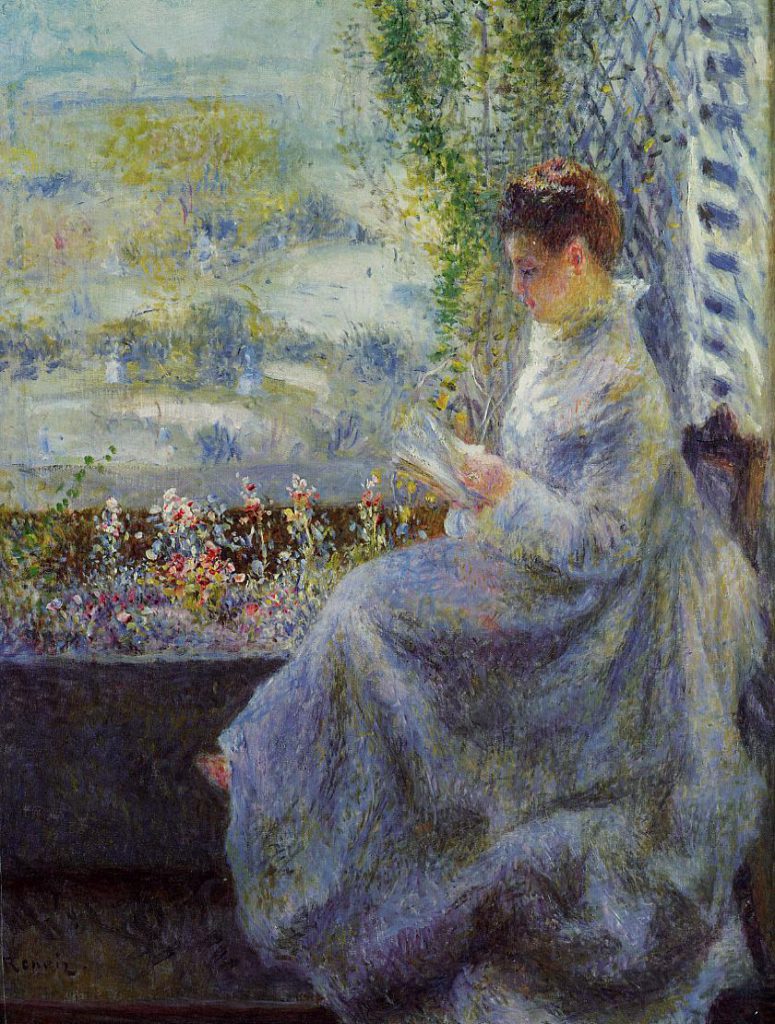


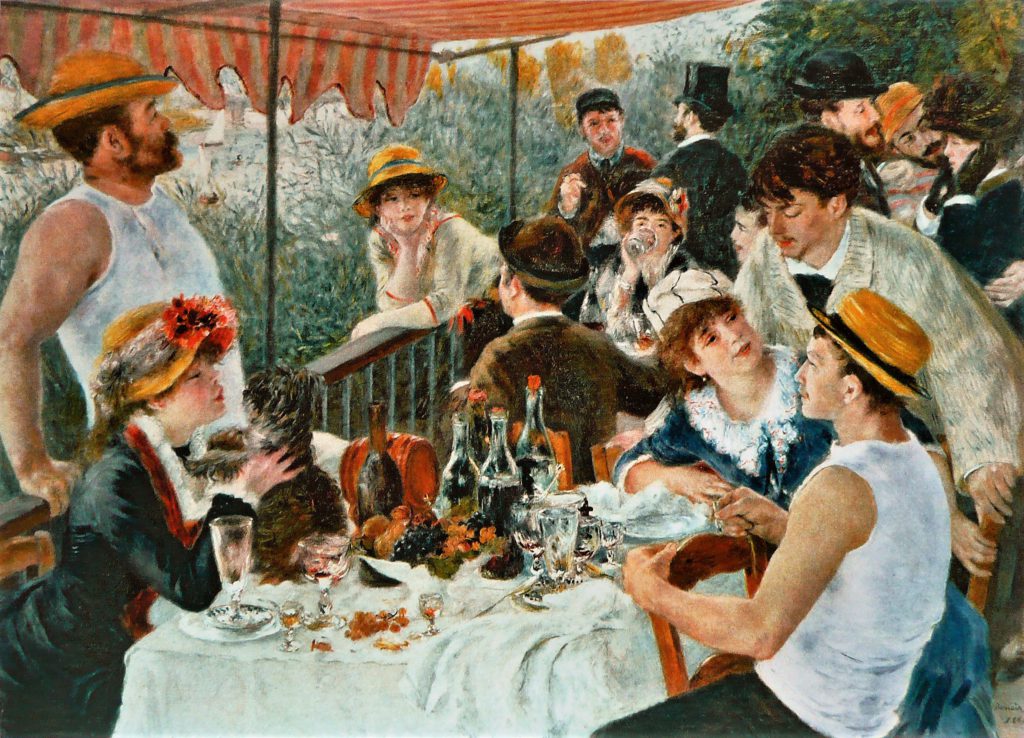

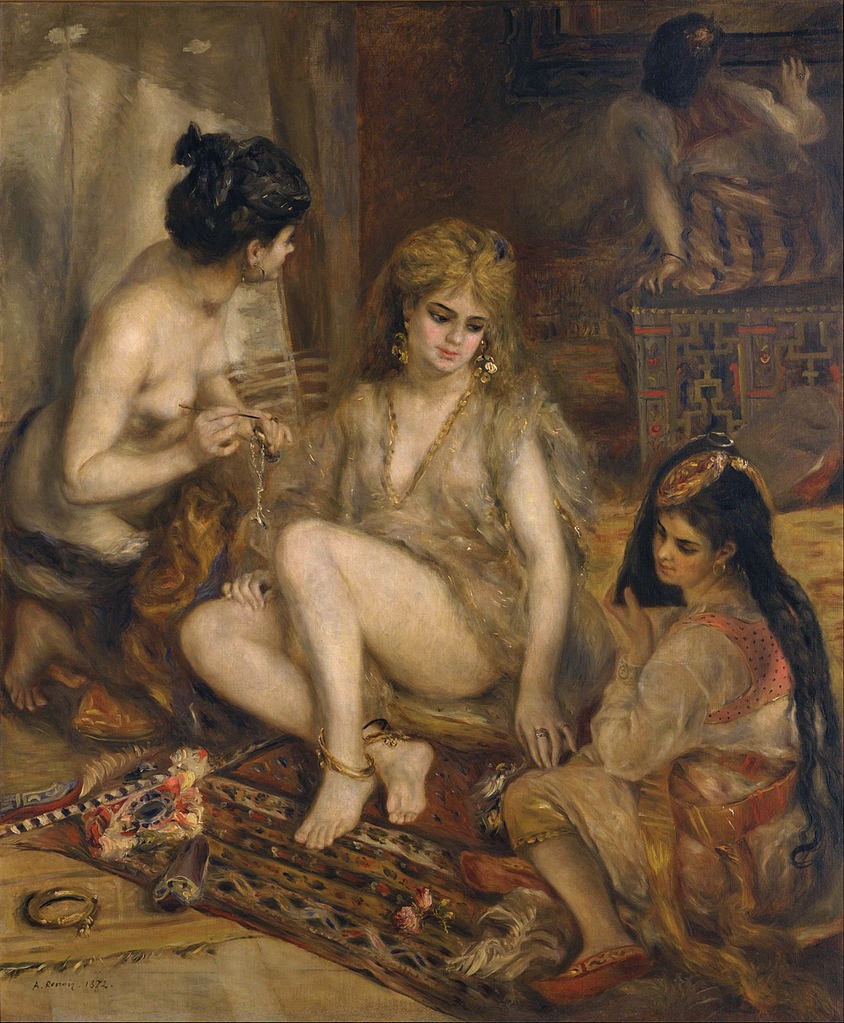
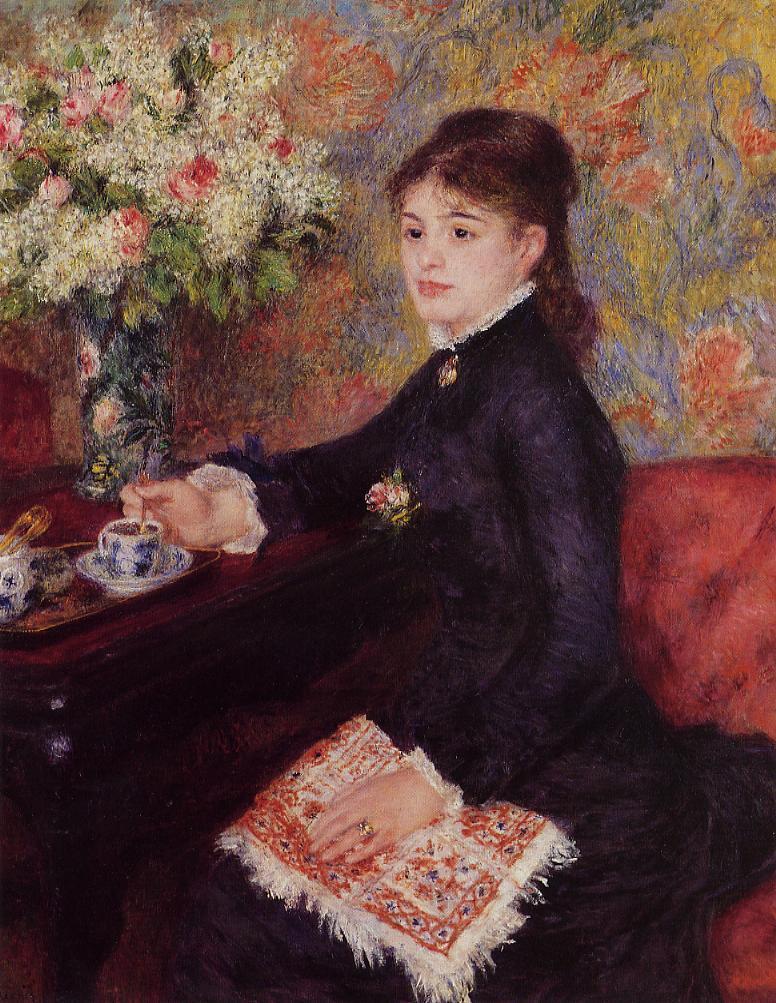



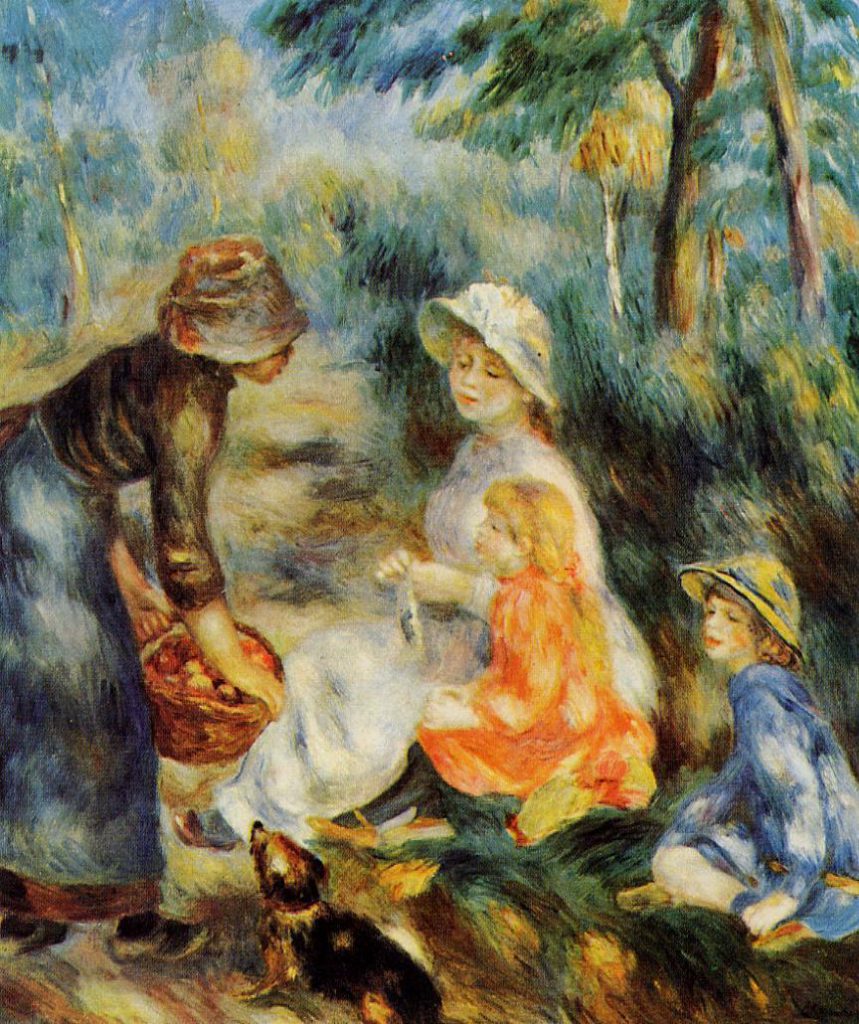








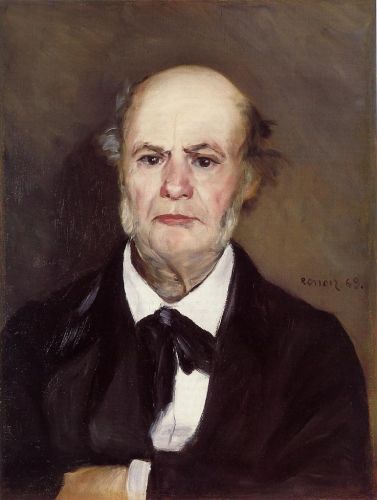




0 Response to "How Many Art Shows Has Pierre Auguste Renior Been in"
Post a Comment